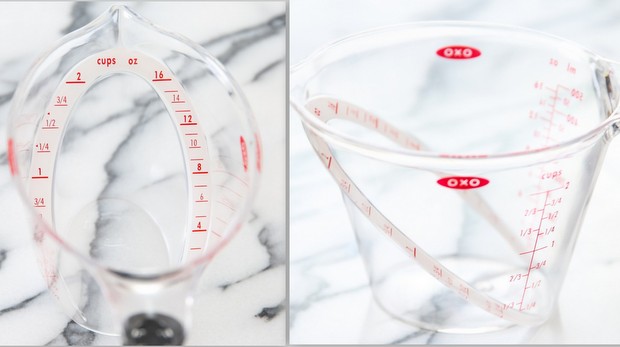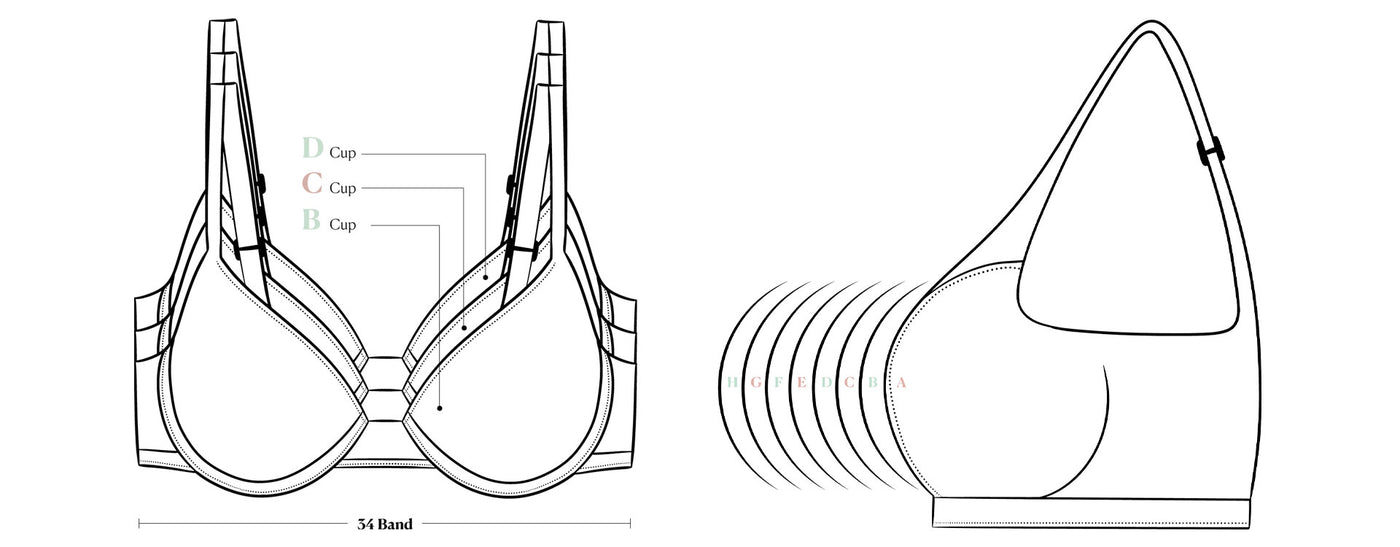Have you ever stared at a recipe and wondered, “What does a cup measurement look like?” You’re not alone. Understanding cup measurements can make a big difference in how your dishes turn out.
Whether you’re baking a cake or cooking a stew, knowing exactly what a cup looks like helps you get the perfect taste and texture every time. Keep reading, and you’ll discover simple tips and clear examples to master cup measurements like a pro.
This will change the way you cook forever.

Credit: kirbiecravings.com
Cup Measurement Basics
Cup measurement is a way to measure volume. It is common in cooking and baking.
Understanding cup sizes helps you use recipes correctly. It ensures the right amount of ingredients.
Common Cup Sizes
Cup sizes vary depending on the country and use. The most common sizes are:
- 1 cup (standard US size)
- ½ cup
- ¼ cup
- ⅓ cup
- ⅔ cup
These sizes help measure both dry and liquid ingredients. Using the right cup size affects the recipe’s outcome.
Standard Measurement Units
Cup measurements use different units around the world. The main types are milliliters and fluid ounces.
| Unit | Value | Common Regions |
|---|---|---|
| US Customary Cup | 240 ml (8 fl oz) | United States |
| Metric Cup | 250 ml | Australia, Canada, New Zealand |
| Imperial Cup | 284 ml (10 fl oz) | United Kingdom (less common) |

Credit: www.leonisa.com
Visualizing Cup Measurements
Cup measurements help us understand the size of liquids or solids. They show how much fits inside a cup.
Seeing cup shapes and volumes makes it easier to compare and use the right amount in recipes or daily use.
Cup Shapes And Dimensions
Cups come in many shapes like round, square, or tapered. Each shape holds a different volume even if the cup looks similar.
- Round cups often have a wide opening and hold more liquid.
- Square cups use space differently and may hold less.
- Tapered cups are narrow at the bottom and wider at the top.
- Height and width affect how much the cup can contain.
Comparing Different Cup Volumes
Different cups show various volumes even if their size looks close. Comparing helps pick the right cup for measuring.
| Cup Type | Volume | Shape | Dimensions (approx.) |
|---|---|---|---|
| Standard Measuring Cup | 240 ml (1 cup) | Round | 8 cm diameter, 10 cm height |
| Espresso Cup | 60 ml (1/4 cup) | Round, small | 5 cm diameter, 6 cm height |
| Square Cup | 200 ml | Square | 7 cm width, 7 cm length, 6 cm height |
| Tapered Cup | 180 ml | Tapered | 6 cm top diameter, 4 cm bottom diameter, 9 cm height |
Measuring Tools For Cups
Measuring cups are essential tools in cooking and baking. They help you add the right amount of ingredients.
There are two main types of measuring cups: liquid and dry. Each type works best for specific ingredients.
Liquid Measuring Cups
Liquid measuring cups are usually made of glass or clear plastic. They have a spout for easy pouring.
- They show measurements on the side for accuracy.
- Designed to measure liquids like water, milk, or oil.
- Allow you to see the liquid level at eye level.
- Come in sizes like 1 cup, 2 cups, or larger.
Dry Measuring Cups
Dry measuring cups are usually made of plastic or metal. They come in sets with different sizes.
| Size | Common Uses |
| 1 cup | Flour, sugar, grains |
| 1/2 cup | Smaller dry ingredients |
| 1/3 cup | Baking powders, nuts |
| 1/4 cup | Spices, seeds |
Practical Cup Measurement Tips
Measuring cups help you add the right amount of ingredients. Using cups correctly keeps your recipes balanced.
Small errors in measuring can change the taste and texture of your food. Learning simple tips improves your cooking results.
Avoiding Measurement Errors
Errors happen when you fill cups the wrong way. Leveling off ingredients and using the right tools prevents mistakes.
- Use a flat edge, like a knife, to level dry ingredients.
- Fill liquid cups to the line at eye level to avoid spills.
- Do not pack flour unless the recipe says so.
- Use separate cups for liquids and dry ingredients.
- Check your cups for clear measurement marks.
Adjusting For Ingredient Types
Different ingredients need different measuring methods. Some are dense, others fluffy, so adjust how you fill the cup.
| Ingredient Type | Measuring Tip |
| Flour | Spoon lightly, then level off with a knife |
| Sugar | Fill cup and level without shaking |
| Brown Sugar | Press firmly to pack it in |
| Chopped Vegetables | Fill cup loosely without pressing |
| Liquids | Pour to measurement line at eye level |
Cup Measurement In Recipes
Cup measurement is a common way to measure ingredients in recipes. It helps cooks add the right amount of each ingredient.
Many recipes use cups to measure dry and liquid ingredients. Understanding what a cup looks like is important for cooking.
Converting Cups To Other Units
Cups can be converted into other units like tablespoons, milliliters, or grams. This helps when you do not have a cup measure.
Knowing these conversions makes cooking easier and more accurate. It also helps when using recipes from different countries.
- 1 cup = 16 tablespoons
- 1 cup = 48 teaspoons
- 1 cup = 240 milliliters (ml)
- 1 cup of flour ≈ 120 grams
- 1 cup of sugar ≈ 200 grams
Common Recipe Measurement Examples
Recipes often use cups for ingredients like flour, sugar, and liquids. Here are some common cup measurements and what they look like.
| Ingredient | 1 Cup Looks Like | Approximate Weight |
|---|---|---|
| All-purpose flour | About a heaping fist full | 120 grams (4.2 oz) |
| Granulated sugar | About a level fist full | 200 grams (7 oz) |
| Butter | Half of a standard stick | 227 grams (8 oz) |
| Milk or water | Fills a standard measuring cup | 240 ml (8 fl oz) |

Credit: shazo.com
Frequently Asked Questions
What Is A Standard Cup Measurement In Cooking?
A standard cup measurement in cooking equals 240 milliliters or 8 fluid ounces. This measurement is commonly used in recipes for liquids and dry ingredients. Using a standardized measuring cup ensures consistency in cooking and baking, leading to more successful recipe outcomes.
How Do I Measure A Cup Accurately?
To measure a cup accurately, use a liquid or dry measuring cup. For liquids, fill to the line and check at eye level. For dry ingredients, fill the cup and level off the top with a flat edge, like a knife.
Are Cup Measurements The Same Worldwide?
Cup measurements can vary worldwide. The U. S. cup equals 240 milliliters, while the UK cup is 250 milliliters. Australia uses a slightly larger cup, also 250 milliliters. It’s important to check the standard used in a recipe to ensure accuracy.
Can I Use A Mug As A Cup Measurement?
Using a mug as a cup measurement isn’t recommended. Mugs vary in size and may not equal the standard cup measurement of 240 milliliters. For precise cooking and baking, it’s best to use a standardized measuring cup.
Conclusion
Cup measurements help make cooking and baking easier. They show how much ingredient to use. Knowing what a cup measurement looks like saves time. It also helps avoid mistakes in recipes. Use the right cup size for accurate results. Measuring cups come in different materials and styles.
Always level off dry ingredients for best accuracy. Liquid cups have a spout to pour easily. Understanding these basics makes cooking more fun and simple. Keep practicing to feel confident with cup measurements. Small efforts lead to better dishes every time.
